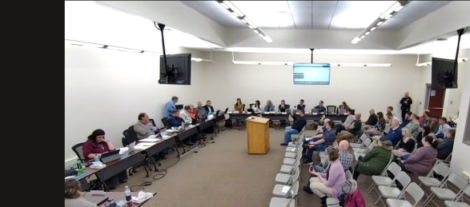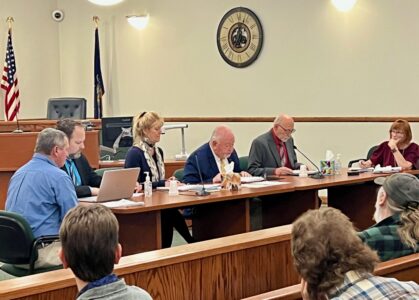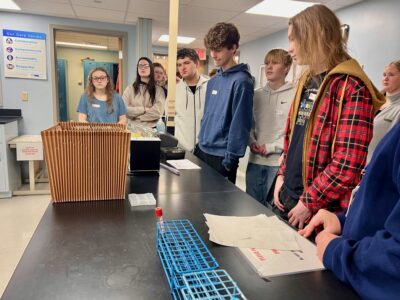ANF potentially affected by proposed national budget

Times Observer photo by Jeff Tome Forest research in the ANF appears to be cut out of the proposed federal budget.
The Big, Beautiful Budget bill may have implications for the Allegheny National Forest.
The federal budget that is currently in the U.S. Senate cuts funding for 80 year long forestry research projects that are 45 years old and could impact how foresters harvest trees for decades to come, as well as the software that makes that simple to do.
At its core, the big bill, which has passed the House and is now being revised in the Senate, includes $3.8 trillion in tax breaks that had been approved during Trump’s first term but will expire in December, imposing a tax hike if Congress fails to act. To help offset lost revenues, Republicans are relying on steep cuts to health care, food stamps and a host of federal programs – including funding for the U.S. Forest Service.
Research goes from $300 million to $0. That line item in the budget helps pay for the forest research that happens in the Allegheny National Forest. The Northeastern Research Station in Irvine, Pa., is under that budget line. One of the most visible things they do each year are four week-long SILVAH training for foresters from across the state. SILVAH is a computer tool for making forestry decisions in hardwood stands of the mid-Atlantic and upper Appalachian region. It is an “expert system” that recommends appropriate treatments based upon user objectives and forest and site data provided by the user.
SILVAH also contains a wildlife attributes report, forest stand growth simulator, and provides the ability to test alternative cuts of the forest and their effects.
SILVAH is based on decades of research in the Allegheny National Forest.
“I am particularly concerned that SILVAH will come to a standstill,” said Amy Shields of the Allegheny Hardwoods Utilization Group (AHUG). “Every year new foresters are coming in from Penn State and other schools, and SILVAH informs them how to do their work according to best practices. We need the research lab to keep updating the system with new information or, with all the invasive species moving in, SILVAH will become useless.”
Also at risk is the long-term forestry research at the 3,563 acre research forest in Kane, which started in 1932. Some studies there span more than 80 years and are entering their second generation of trees. Information gleaned from research in Kane has significantly improved management of mixed hardwood forests.
Research started there focuses on forest regeneration and renewal. In 1980, an 80 year study of the forest was initiated to study different harvesting techniques and how they affect the forest in the long term. Stands were created with even-age, two-age, and three variants of uneven-age stands to see how they regenerated in the long term. These studies directly impact how foresters cut the forest to maintain optimal forest health. Studies include the 25 year Kinzua Quality Deer Collaborative, which investigates deer impact on forest regrowth, as well as invasive species, and challenges facing some of the species the region is known for, such as black cherry.
Black cherry is known as a valuable hardwood that has been fruiting less and regrowing less in recent years. The research done at the Northeastern Research Station could help foresters ensure that Black Cherry grows in the future. 80% of Pennsylvania’s Black Cherry trees grow in the ANF.
“These cuts extend way beyond Warren and the Northeastern Research Station,” Shields said. “We have forest products research labs outside of Philadelphia and parts of the research lab that extend to Wisconsin. These labs are studying biomass and looking at new ways to use wood in new products.”




